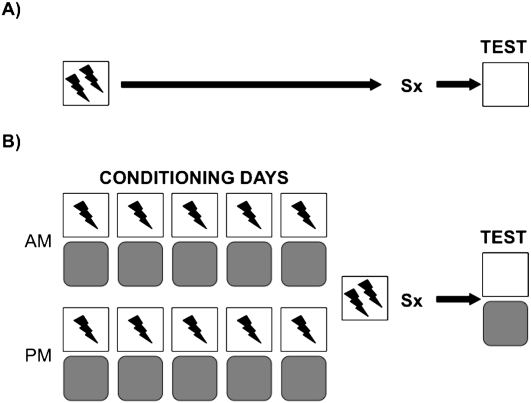Figure 1.
Illustration of the experimental design used in (A) the single conditioning session and (B) repeated conditioning session experiments. In A the rats were initially placed in the conditioning chamber for 17 min and received the first of 12 footshocks (1 mA/2 sec) at the 300-sec mark, and then one every following 58 sec after shock offset. Seven to 10 d later, the rats either received sham or HPC damage (Sx). Approximately 10 d after, the rats were returned to the chamber to assess freezing over a 5-min retention test. In B the rats were placed initially in the conditioning chamber for 1 min and received a shock at the 45-sec mark (Shock Context). Approximately 45 min later, the rats were placed in a different chamber for 1 min and did not receive shock (No-Shock Context). The procedure was repeated twice daily for five consecutive days, and the Shock and No-Shock chamber order was counterbalanced according to the principles of a Latin Square design. The rats then received sham or HPC damage 1–3 d later. The rats' retention was assessed in both contexts ∼10 d after surgery in both the Shock and No-Shock Context in a counterbalanced order with a 24-h span between tests. Importantly, the number of shocks, context exposure time, and interval between initial learning and surgery were matched between both experiments.

